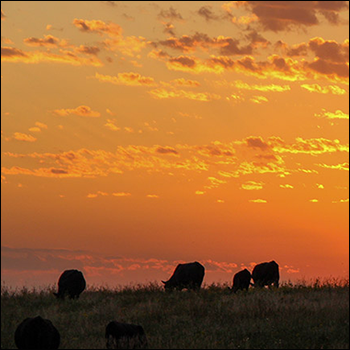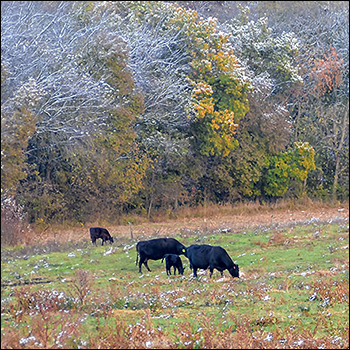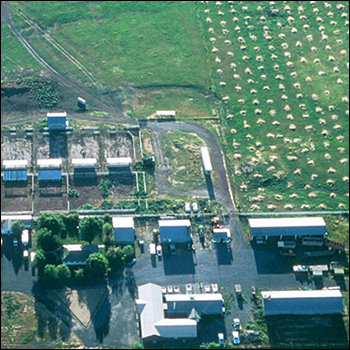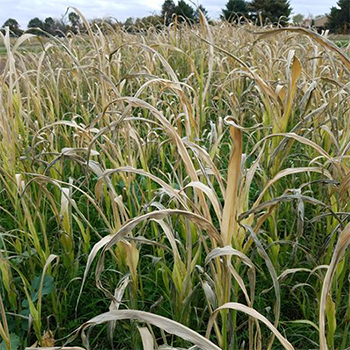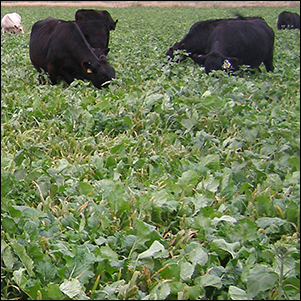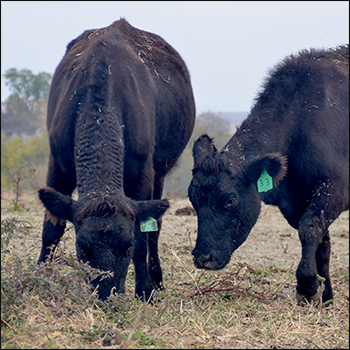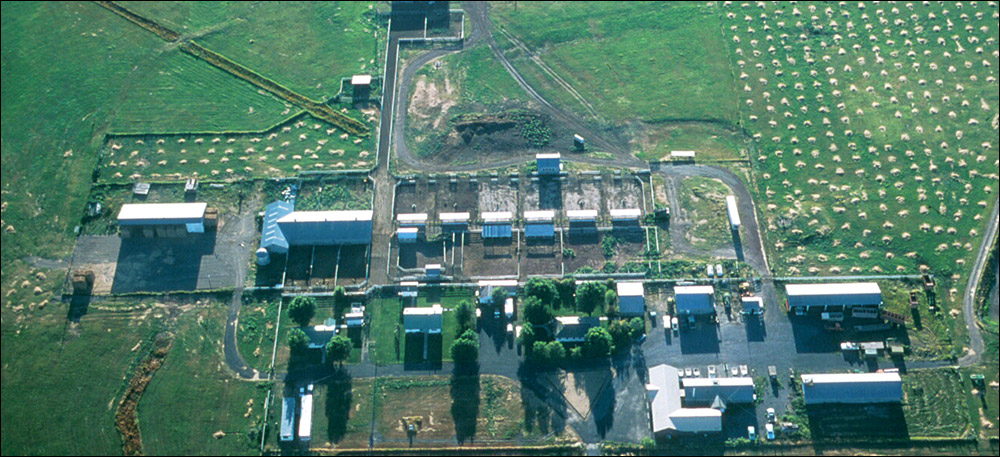
Rake-bunched Hay for Winter Feed
Hay-feeding alternative provides plenty of benefits.
Finding ways to stretch fall and winter feed and keep cattle grazing longer can reduce producers’ costs and keep cattle healthier, according to Timothy DelCurto, professor of Range Beef Cattle Nutrition and Management at Montana State University.
While he was at Oregon State University’s Eastern Oregon Agriculture Center, Union, Ore., the two range livestock research stations did studies on rake-bunched forage for fall and winter grazing. For this system, the hay is cut, then raked into small piles of about 80 to 120 pounds (lb).
“The difference between rake-bunching and windrow-grazing is that the rake-bunched piles work better in areas where there’s more snow. It can be difficult for cows to find windrows when snow is deep,” he says.
The researchers used an old bunch rake to put the hay in piles.
“All you need is something that will scoop up the hay to leave it in a pile. We just went down the windrows and pushed the hay into piles, which is very quick and simple,” DelCurto says. “Those piles are like a little haystack, and the hay keeps very well — comparable with baled hay.”
The bunches keep better than windrows, he says, especially in areas that get significant amounts of winter precipitation. There’s less spoilage because less surface area is exposed to the weather and the ground. It may not work in areas that get a lot of wind, however. Windrows and hay piles are both vulnerable to being scattered by high wind.
In a warm, wet climate, there may also be risk for mold. It’s sometimes harder to get it cured and dried.
The rake-bunched hay is an alternative DelCurto prefers to windrow-grazing in many places, particularly in Western environments that have fairly significant winter snow. He grants that windrow-grazing or even bale-grazing — leaving round bales out in the pasture — is more popular east of the Rocky Mountains in a climate that gets most of the precipitation April through October, with relatively dry winters.
During 10 years of rake-bunch grazing at the Eastern Oregon Ag Research Center, cows did fine with up to about 2 feet of snow, he shares. Researchers had to provide supplemental feed one year of the 10 when the snow, deeper and crusted, made it difficult for the cows to access the piles.
Whether windrow-grazing or grazing rake-bunched hay, he advises using electric fence to strip-graze the field. This cuts down waste and, compared to feeding hay, isn’t labor-intensive. At the research center, moving the electric fence once a week seemed adequate. Open up perhaps two or three new rows, depending on the size of the field and number of cattle. Once they clean that up, open a new section, continuing access to the previously grazed portion so cows and calves can go back and clean up anything they missed.
In almost all cases, grazing rake-bunched and windrowed hay offered savings to ranchers.
“A lot of producers feed cattle with flatbed pickups to haul hay out, and when you get deep snow or muddy conditions, it can be tough to drive out there — hard on equipment and people,” says DelCurto.
It’s nice if the cows can feed themselves, and moving electric fence once every five to seven days is not a big chore, he says. You can pick a day and a time of day when it’s not below zero or during a blizzard.
“The only thing I caution people about with alternative feeding strategies is that you always need a backup plan. There might be an occasional year that you’d still need to feed hay,” DelCurto says, referring to years of deep snow.
Editor’s note: Heather Smith Thomas is a cattlewoman and freelance writer from Salmon, Idaho. Photo by Timothy DelCurto.
